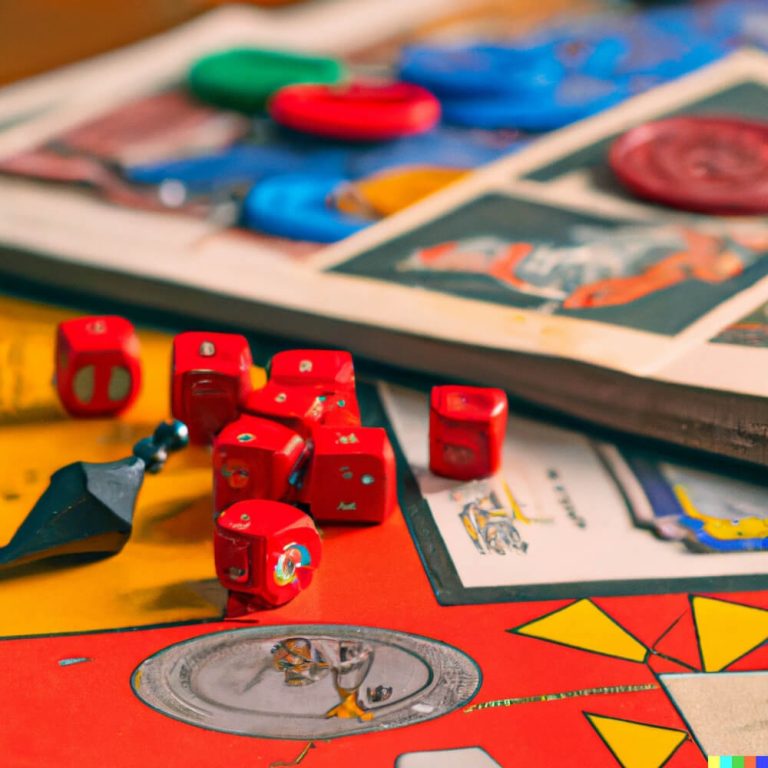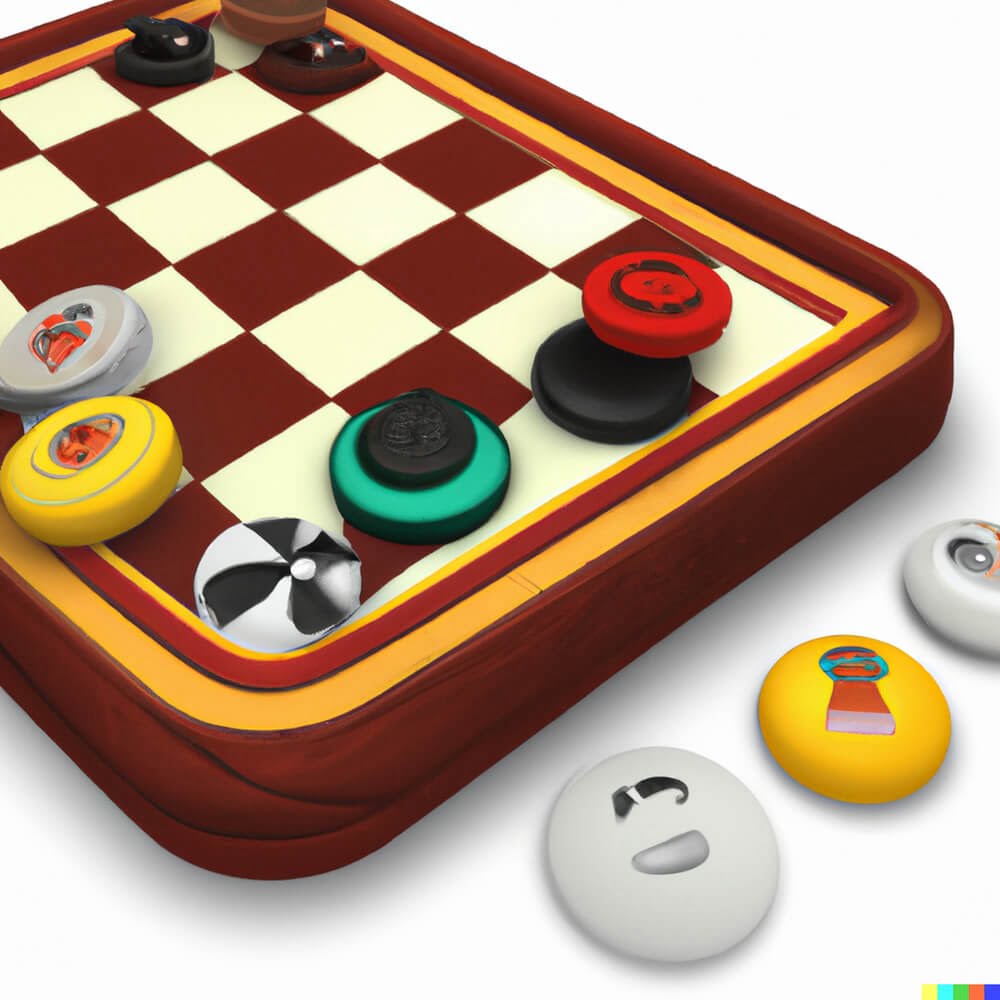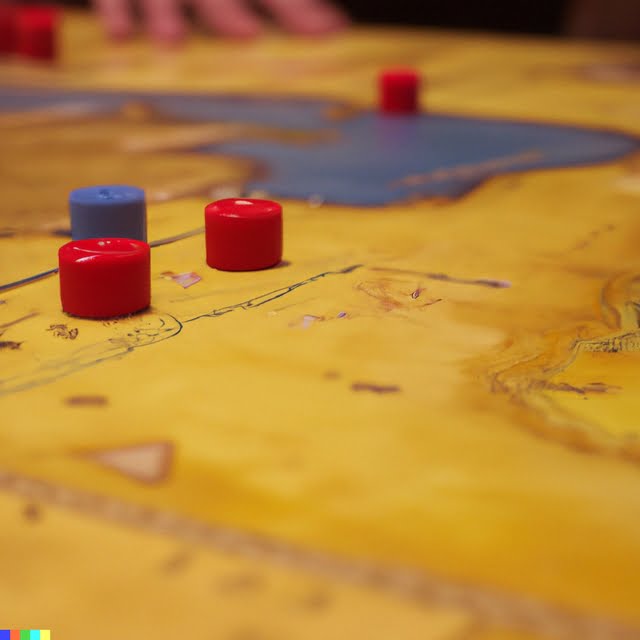Introduction
Submitting a board game idea can be very beneficial for both individuals and companies alike. For an individual, it can provide an excellent creative outlet that allows their imagination to take form in the form of a tangible product such as a board game. For a company, submitting board game ideas can help them generate new content, gain publicity through media outlets, and expand their brand identity. Additionally, by creating a successful board game, it opens up potential revenue streams and could potentially become extremely profitable if it resonates with the right audience. Therefore, here are some steps to follow on how to submit board game ideas:
Steps:
1. Do Your Research: Before you start brainstorming your ideal board game idea, you should research existing games in the same genre and market segment as your hypothetical project. This will help give you a better understanding of what makes successful games tick and also allow you to develop innovative ideas to set your product apart from competitors within the industry.
2. Brainstorm Ideas & Formulate Conceptual Mechanics: Once you’ve done enough research about what other people have been doing in the market segment of interest, it’s time to find out what makes your product unique. If you’re working with a team then this is a great opportunity to brainstorm collectively and create more focused concepts while refining any existing ideas. During this process try developing general gameplay loops and core mechanics which can be later detailed down into specific rulesets depending on your target age range & complexity level desired for the final product.
3. Playtest Your Product with Others: After crafting the overall concept & generating theoretical mechanics for the prototype version of the game it is important for any startup or developer looking to market their work effectively that they playtest multiple iterations of their design early on in order to analyze performance/reception among test audiences as well as make necessary adjustments or properly balance any features accordingly after considering feedback from others prior releasing anything commercially available.
4. Enter Prototype Submission Processes: Lastly once considerable progress has been made during development stages oftentimes companies will establish submission processes designed around receiving finished prototypes built off previously accepted internals so that they can further evaluate each offering before crowdsourcing any additional capital sources if interested in securing additional partners involved with releasing final versions of development products commercially completed under respective manufacturing label libraries currently available within influential retail channels located worldwide publically accessible today through stock markets/distributors etc…
Identifying and Researching Your Target Audience
Before submitting board game ideas, it is important to determine who your target audience will be. This will help ensure that the board game you create is tailored for a particular demographic and has the best chance of success. Researching potential audiences can provide valuable insight into what elements people are looking for in a board game. You should explore demographics such as age range, interests, gender, income level, and location when researching potential audiences. Additionally, use resources such as social media or surveys to learn more about what people are looking for in a board game. This information can also assist with developing elements that make your board game unique to various players. Once you have identified your target audience, you’ll be better positioned to market an exciting and successful game.
The Step-by-Step Process
1. Gather all the materials needed for your board game idea: This should include a concept document, which explains the basic components and core rules of the game; either prototypes or illustrations detailing what the board looks like, as well as any cards, tokens, and other pieces that would be used in play; and any outlines for how to set up the game’s structure or determine a winner.
2. Research existing games in order to get an idea of what works—and what doesn’t: Familiarize yourself with both traditional and modern board games by reading reviews or playing them yourself in order to understand their common design patterns and themes.
3. Prepare a set of documents outlining your idea: Put together a comprehensive package containing all relevant information on your board game such as gameplay details, setup instructions, play-by-play strategies for winning, possible expansions or variants for your game, any artistic concepts such as illustrations or digital mockups that might help visualize it better.
4.Steps for pitching it to publishers/Retailers: Start by identifying publishers/retailers that may be interested in your ideas (most websites will have their “contact us” page which can guide you through submitting it). Once you get in touch with a publisher/retailer, present them with your complete board game packet in the form of an email along with any elevating points(such as memorable moments during play) that could help make your idea stand out. Give ample time for feedback before following up. Some publishers might ask you to sign an agreement regarding royalties etc if they decide to take your idea further before they officially accept him as offering of products they bring into market (commonly called ‘pitching’).
5. Consider setting up BoardGameGeek profiles: A great way to publicize your work is via BoardGameGeek profile where people can connect their discussion around new games that enter their MarketPlace feature individually. You can also check other similar ideas available here and comment on others inspiring stories from fellow gamers/ mentors/ designers around world enabling meaningful conversations among themselves regarding respective project (or critiques etc ). This helps keep track discussions & offers updates about progress made so far by given product users subscribes for!
Choosing the Right Platform to Submit Your Board Game Idea
When it comes to submitting your board game ideas, finding the right platform is key. There are various ways you can go about this, depending on how much risk you are willing to take and how much money you would like to invest in making your board game. Deciding which direction to go can be overwhelming, so consider these different options:
1. Marketplaces and Contests – Marketplaces such as The Game Crafter, Kickstarter, and Indiegogo allow budding game designers to submit their ideas and see what kind of feedback they can receive from publisher or playtesters. These markets also host contests where people can pledge support for a project, allowing creators the chance to make their projects come alive. Additionally, larger companies such as Hasbro have their own submission systems for game design that can lead to bigger investments and industry recognition.
2. Smaller Publishers – If your purpose is mainly experimentation or small-scale productions, consider approaching smaller publishers who specialize in creating independent games. They will often provide resources such as funding and guidance in order to help new creators get started with their projects. This option allows for more input from developers than a larger company may be able to provide.
3. Self-Publishing Striking out on your own is an intimidating prospect but it does offer the opportunity for full control of your product with no middleman involved—provided proper measures are taken towards protecting your work legally. This is best pursued through avenues like print-on-demand services that minimize costs while simultaneously allowing freedom in shaping how players view their experience of the game’s structure or theme.
Regardless of what path you choose, researching each option carefully before committing is imperative—this includes reading any fine print associated with marketplace transactions or contracts pertaining to published pieces (i.e copyright notes). With planning and careful consideration, any individual has the ability to take an idea from concept onto paper then into reality!
Crafting Your Pitch
When you’re ready to make your board game idea a reality, it’s important to craft an effective pitch that convinces potential publishers and resellers of the marketability of your idea. When creating a successful pitch, there are various techniques that can be useful in maximizing the impact of what you present.
One simple technique is leveraging visual elements. A polished presentation, vivid graphics and inviting illustrations can make all the difference when it comes to catching someone’s attention and making your point stick. Detailed diagrams of the mechanics behind the game or sketches of key elements will help bring to life what you have to offer and leave a lasting impression on potential partners. Additionally, showcasing a creatively-built prototype or variations on artwork used throughout the game can go a long way towards illustrating its range of appeal for people from different age groups.
Furthermore, providing clear examples of how your game would work within both retail stores and other distribution outlets is beneficial in demonstrating that it has potential for wide-reaching success. Describing market strategies such as widespread promotions or holiday specials can be impressive when trying to express your concept’s desirability amongst consumers. Furthermore, outlining ways in which your idea stands out from the competition with different themes or genres might likewise help convince someone into taking interest in your product and helping push it forward onto store shelves.
Writing a Convincing Proposal
When submitting board game ideas to a publisher, it is important to put together a convincing proposal that details the game concept and key selling points. The proposal should explain the game’s theme, rules, game mechanics, number of players, playing time, components or equipment needed and the target audience. It should also include information on any platforms the game would be available on (mobile apps, software games etc.). In addition to this information, creating graphic design mock-ups of what the box art and rule book might look like can be helpful for visualizing how the game would be presented to consumers. Finally, if possible, including success stories from playtests with people in the target audience can help demonstrate that the game was well received and is ready for production.
Crafting a Prototype to Demonstrate YourGame Idea
If you have an idea for a board game, you will need to create a prototype in order to demonstrate your concept. This will involve building the components of a basic version of the game. To start, decide on the overall theme and object of the game – who are the players, what do they do, what are the rules? As you design these foundations for your board game, consider how it will be visually represented. Choose colors and graphic elements that capture the essence of what you’re trying to convey.
Once you have established the goal of your game, develop a set of instructions that outline how it should be played. Depending on your game’s complexity, this may require more detailed written instructions with examples or diagrams that demonstrate how it works. If needed, find inspiration in existing games or test run some trial versions with friends or family members to help refine your design further.
The material details for constructing your prototype can vary depending on its presentation; but generally speaking this includes items like: board and/or cards, dice (that adhere to assigned limits for each roll), tokens (to demark movement goals), markers (someone has won a certain round or achieved certain milestones) etc. Balanced play is critical for any good board game; so make sure each component closely follows those predetermined specifications from before so that all sides are playing fairly throughout.
Practicing and Perfecting Your Demo Presentation
Before you submit your board game ideas to a publisher, it is important to take the time to practice and perfect your demo presentation. This will help ensure that you have thought through the game mechanics and framework, as well as practiced how you will explain the game. Prepare by researching different publishers and their submission processes, such as what components they prefer (electronic or physical copies), how they want the presentation formatted, etc. Visuals can also help give an idea of what your board game looks like and allow publishers to more easily understand it without playing it themselves. Make sure to practice presenting with friends and family in order to understand what aspects of the game are unclear or need further explanation. It is also important that your presentation match the tone of the publisher—some may prefer a more professional approach while others value a more creative interpretation. Finally, make sure your language is accessible for all audiences so that anyone unfamiliar with the concepts or basis for the game can still grasp it. Taking the time to both create a thoughtful demo presentation and practice presenting it will give you an added edge when submitting board game ideas to any publisher.
Addressing Potential Rejection and Adjusting Your Strategy
When submitting your board game ideas, you may not always get the response you anticipate. A rejection letter doesn’t necessarily mean that your idea is bad – it just means the publisher or game studio wasn’t the right fit for that particular game. It’s important to manage your expectations when pursuing your game ideas and understand that not everyone will find them as fascinating as you do.
If you do find yourself facing a rejection, consider asking the feedback from the publisher or game studio to garner advice and development insights. This can help give you greater understanding of what works in that particular marketplace, allowing you to adjust your strategy for future submissions. Don’t be afraid to take risks, try something unexpected and challenge established industry norms – these qualities can often make a great impact on readers of submission materials. Additionally, don’t be discouraged! You never know who might show interest in your ideas if given the right opportunity. Keep refining and resubmitting until you hit success.
Evaluating Next Steps to Advance Your Board Game Idea
Once you have a good idea for a board game, it is important to evaluate next steps to advance it. There are many routes available to get your board game idea out there and finding the right one depends on what kind of resources you have access to. Here are some ideas to consider:
1. Develop a Prototype – It is essential that you develop a functional prototype of your game in order to bring it to life and make it tangible. Having a proof-of-concept is an excellent way for potential investors or publishers to gauge the commercial potential of your game.
2. Seek Funding – If the financial means aren’t within reach, there are several different sources of crowd funding and investors who may be interested in supporting your project. Platforms like Kickstarter and Indiegogo make seeking funding easier than ever before.
3. Reach Out To Publishers – Building relationships with publishing companies can be extremely beneficial if you are looking for support and resources to develop your game further down the line. These companies will help fund, manufacture, market and sell the product, but they will also take royalties as payment for their services rendered.
4. Send A Demo Copy To Trade Shows – Trade shows such as Gen Con can be great places for getting games exposed, but be aware that there may be an entry fee required before submitting an entry along with hefty competition from other participants trying to get their games featured at events like this too. Alternatively, there are independent shows that may be interested in having your game showcased without any fees required upfront.
Wrapping Up
Submitting a board game idea is a process that should be taken seriously and done properly. After thoroughly researching the topic, thinking of creative and marketable ideas, designing an effective prototype and writing down the rules for the game, it is time to conclude your journey by summarizing all the steps you have taken in order to get your board game idea ready for submission. Show confidence in your product by showing that you’ve taken extra care and consideration into every detail before submitting it. Additionally, take some time to think about potential marketing strategies for when the game is released. Once you feel ready, submit the board game idea to publishers or competitions where it will be considered for production. Be sure to keep track of progress regarding submissions, as well as any feedback or advice sent back from publishers. Good luck!

I love playing all kinds of games – from classics like Monopoly to modern favourites like Ticket to Ride.
I created this blog as a way to share my love of board games with others, and provide information on the latest releases and news in the industry.





